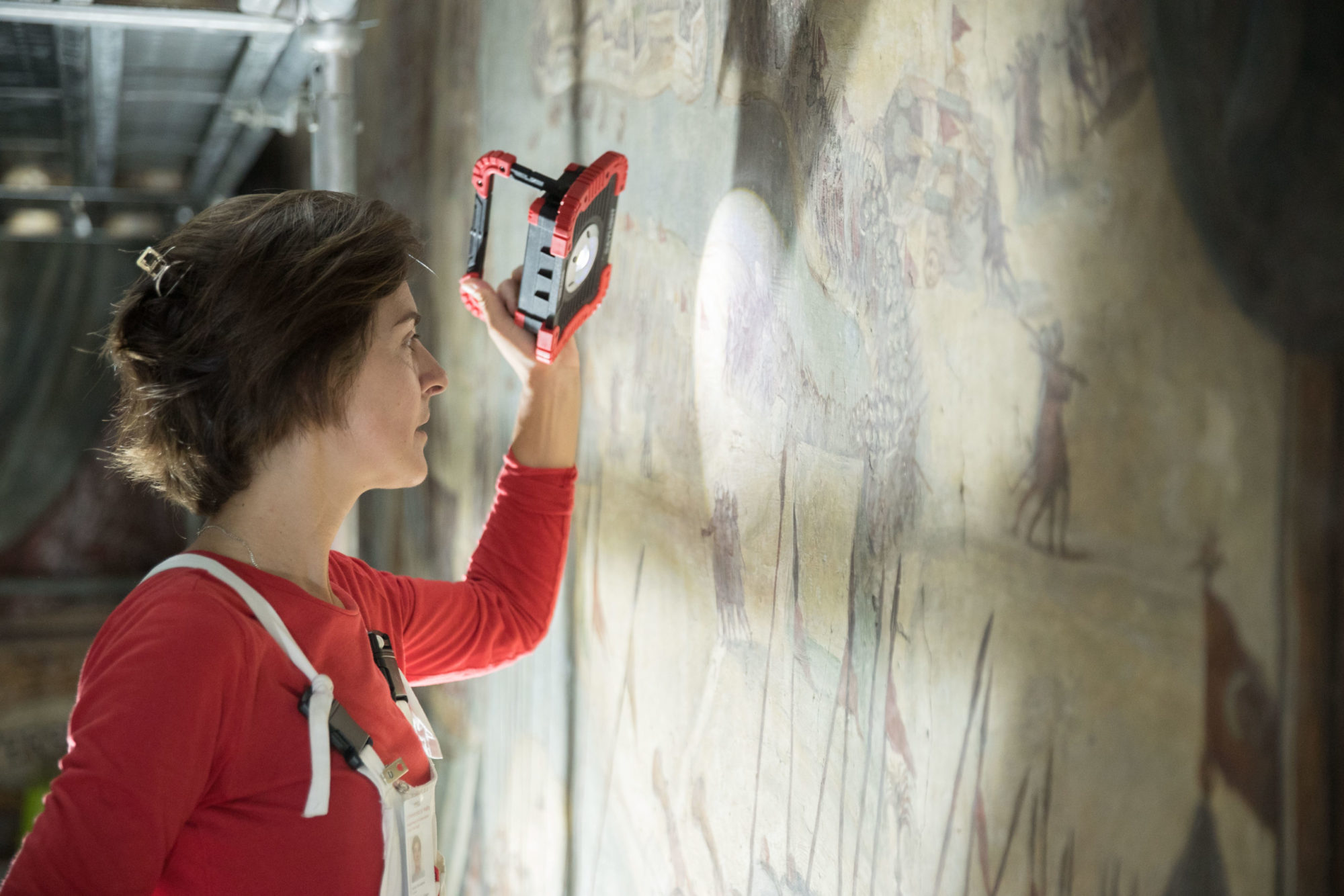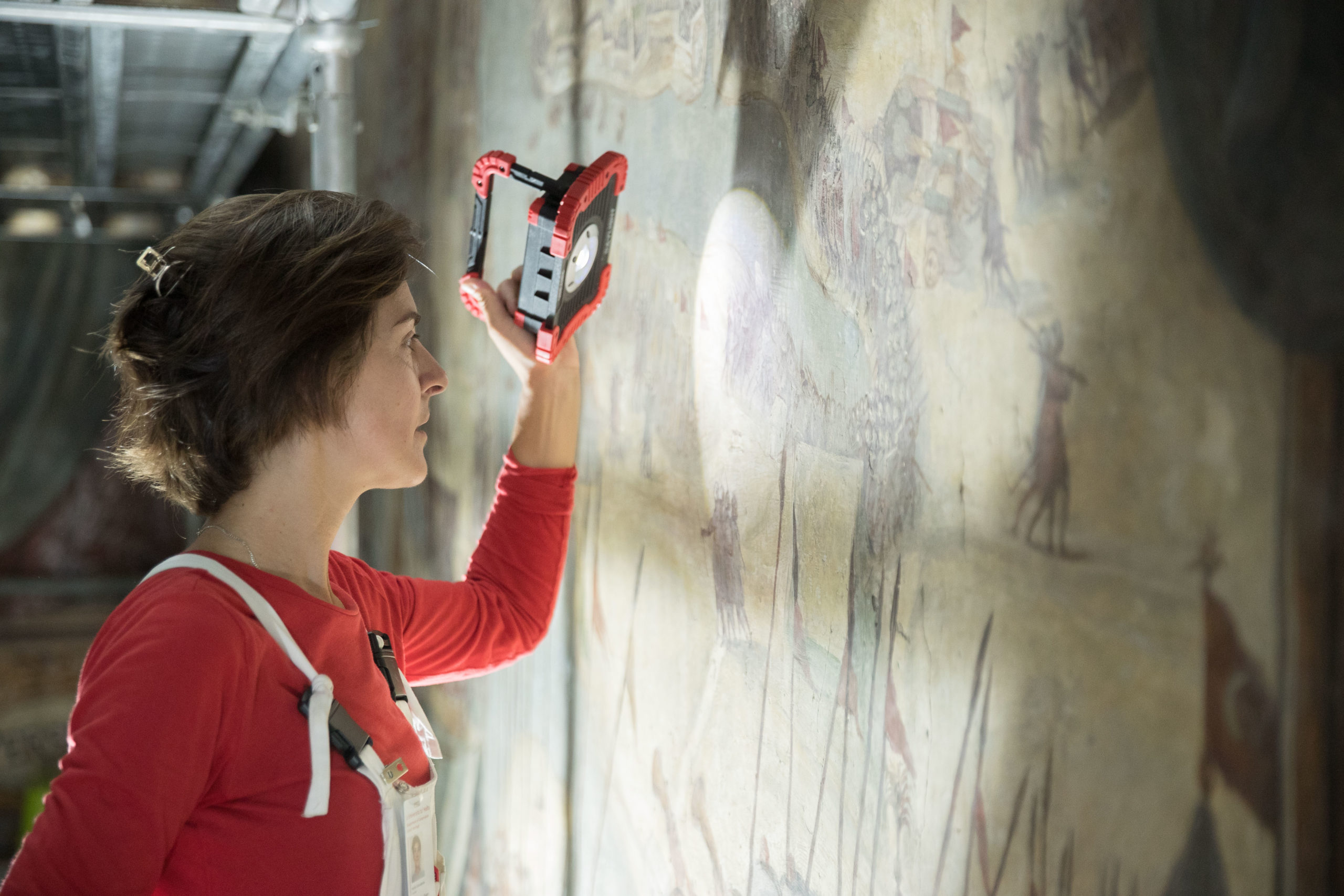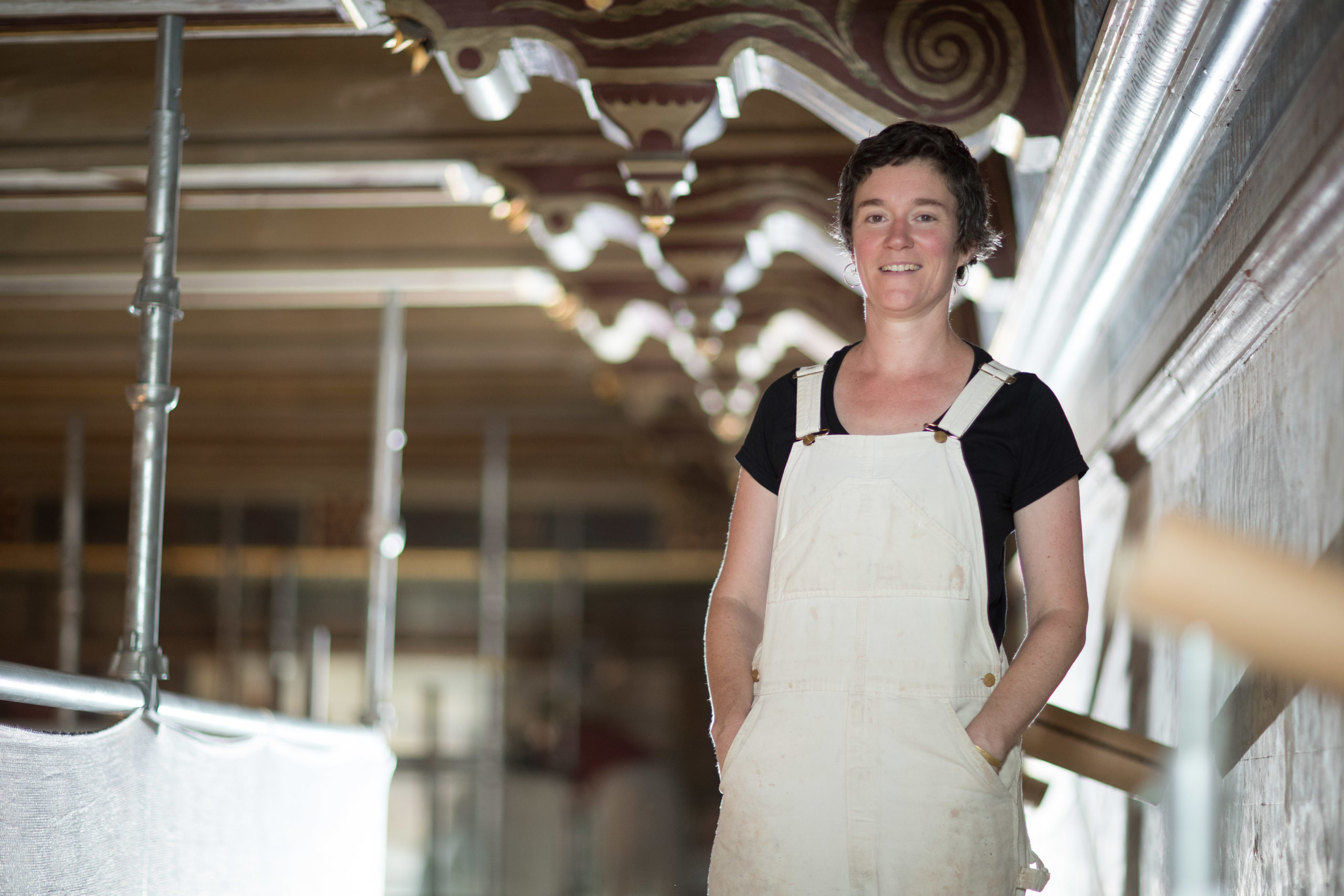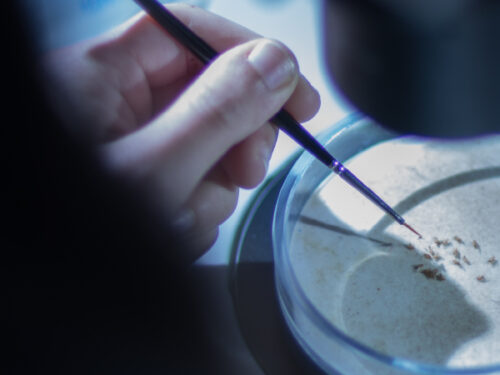
The conservation continues of a wall paintings cycle by renowned Italian artist Matteo Perez d’Aleccio, which depicts in detail one of Malta’s most famed historic events: the Great Siege of Malta in 1565.
The project, launched and progressing through funds secured via RIDT, assures the future of this extraordinarily important document for generations to come.
One of Malta’s most significant historical artefacts
set in the Grand Council Chamber of the Grand Master’s Palace in Valletta, the wall paintings cycle offers a unique – and historically accurate – depiction of the Siege, when the far-outnumbered Maltese, led by the Knights Hospitaller, successfully defended the island from attempted invasion by the Ottoman Empire.
Great Siege veteran Grand Master Fra Jean de Cassiere (1572-1581) invited artist Matteo Perez d’Aleccio (1547-1628) to Malta in 1577 to depict the four-month siege. Using eyewitness accounts and written reports, d’Aleccio created a narrative sequence of the Siege across a series of 12 scenes, thus recording in exquisite and true detail one of the key moments in Malta’s history.
Today, these paintings serve as an enduring symbol of Maltese identity and a threshold in the history of art in Malta.

A project to preserve history
Launched in 2018, the conservation project is the result of a partnership between the Department of Conservation and Built Heritage of the University of Malta and Heritage Malta, under the auspices of the Office of the President of Malta.
An expert team of professional wall paintings conservators from the Department of Conservation and Built Heritage, led by Prof JoAnn Cassar and including Ms Jennifer Porter, Dr Chiara Pasian and Ms Roberta de Angelis, manages and supervises the project’s conservation efforts. Heritage Malta conservators and historians also make up an essential part of the team, advising on the project’s historical and art historical aspects.
Together, they focus on completing the conservation of the final third of the extensive wall painting cycle, with two thirds already conserved between 2001 and 2005 by the Fine Arts Academy Dresden.
An expert conservation process
The d’Aleccio wall painting cycle also reveals compelling insights into the painting techniques and materials the artist used to create it: important information that is being slowly revealed as the project progresses.
Following full documentation of the paintings using a combination of multispectral imaging and photogrammetry – which allows investigators to detect, distinguish between, and often newly identify original painting, restoration and deterioration materials – the team conducted further non-invasive surveys to establish the condition of the paintings.
Using these valuable observations from their preliminary studies, the team could decide on the best approach for the conservation of this masterpiece and begin the process with a clear understanding of the sensitivity of the original materials, most important when choosing cleaning techniques. Equipped with these data, the team is currently cleaning and removing earlier restoration materials such as varnishes and paint added in the early 20th century, while stabilising areas of plaster that have detached over time.
A springboard for future conservators
While the project moves forward thanks to the teamwork of local and international professionals as well as interns with complementary backgrounds, it also offers a rare opportunity for future conservators to learn their profession. It is an essential component of the academic programme for students following an MSc in the Conservation of Decorative Architectural Surfaces at the Department of Conservation and Built Heritage.
As the master’s programme cycle draws to a close and students cease their involvement in the project in a training capacity, it also offers them another life-changing development: the first project of their careers as professional conservators.
Indeed, the project has been key in training a new generation of professional conservators to the latest standards of practice and skillsets. These early-stage professionals are not only essential for the preservation of Maltese cultural heritage but are also vital for the future of quality conservation worldwide.
An international impact

The project continues despite understandable setbacks due to the COVID-19 pandemic.
Its research phase – which considered events since the cycle was painted, such as earlier restorations or war damage – compiled the physical history of both the cycle and the Throne Room, as evidenced by documents in Malta’s archival collections. The results of this work were presented as part of a National Library of Malta public lecture series.
In fact, the d’Aleccio wall painting cycle conservation team’s ongoing publication of valuable research material and focused training of conservators spotlights the far-reaching impact potential of projects such as these – and the importance of sustaining them with time, resources and funding.
The project will publish further results in international conferences and journals, inform innovative new approaches for global art intervention and conservation, offer a window into the process of one of Italy’s most acclaimed artists, and launch the global careers of young professional conservators – all while preserving a hugely significant piece of Maltese heritage.
This project commenced thanks to a generous donation of €75,000 from the Gasan Foundation to the RIDT in 2019 and continued with a further €75,000 from the Planning Authority’s Development Fund and €10,000 from the Melita Foundation, both secured through RIDT. Additional sponsorship is now required to complete the conservation of the d’Aleccio wall painting cycle later this year.




